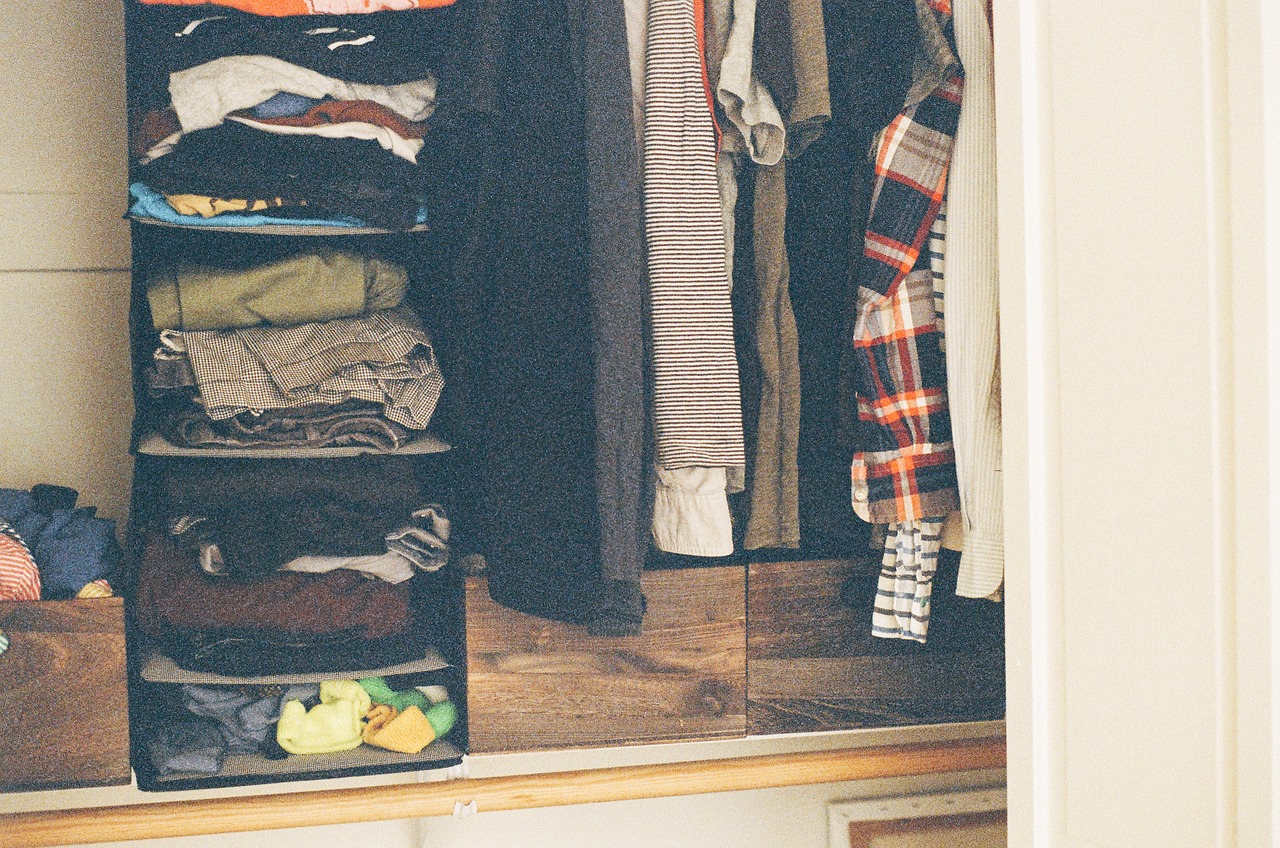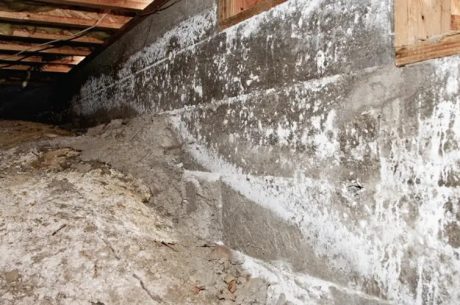Few things are as frustrating as opening a closet or laundry basket and being hit with that unmistakable, damp, earthy stench of mildew. For homeowners across Middle Tennessee, from Hendersonville to Cottontown, water damage, whether from a forgotten wet towel, a slow roof leak, or a major flood, often leaves behind a nasty reminder: mold on textiles. The sight of black, green, or white spots on your favorite jacket or sweater can be disheartening.
If you’re searching for answers on how to get mold out of clothes, you’ve come to the right place. As your local property restoration experts, Puroclean of Hendersonville deals with mold at every level, from minor mildew stains on a damp shirt to severe structural contamination. We’ve compiled this comprehensive, step-by-step guide to help you salvage your fabrics safely. We’ll show you exactly how to clean mold off clothes and how to wash clothes that smell like mildew, while also explaining when the job is too big for your washing machine and requires professional mold removal in Hendersonville.
Table of Contents

The Mold and Mildew Menace: Why It Attacks Your Wardrobe
Mold and mildew aren’t just ugly; they are fungal growths that feed on organic materials. Your clothing, made of cotton, linen, wool, and even some synthetics, provides the perfect food source. Add moisture and lack of airflow, common issues in damp Tennessee basements or poorly ventilated closets in older Nashville homes, and you have a mold incubator.
The Three Ingredients for Textile Mold Growth:
- Food Source: Natural fibers (cotton, leather, linen, wool).
- Moisture: Water damage, high humidity (over 60%), or damp storage.
- Stagnant Air: Poorly ventilated closets or tightly packed storage boxes.
When you successfully learn how to get mold out of clothes, you are essentially neutralizing the fungal spores and lifting the stain without damaging the fibers. It’s a precise process, especially when trying to save delicate items or large, heavy fabrics like carpets and upholstery.
The Critical First Step: Safety and Segregation
Before you start any cleaning, protect yourself and prevent the mold from spreading to other areas of your home. This step is non-negotiable, particularly if the mold is visible on multiple items or has been growing for more than a few days.
1. Evaluate the Scope of the Mold Contamination
If the moldy clothes are the result of a small, contained event (e.g., a puddle under a sink or forgetting laundry in the machine), you can likely handle it. However, if the mold growth is widespread (e.g., covering more than 10 square feet on the clothes) or is a result of large-scale water damage or sewage backup, do not attempt to clean them yourself. Those items may need to be professionally handled or discarded, as the spores and contamination levels are too high for a standard wash cycle.
2. Isolate and Handle With Care
- Move Outdoors: If possible, take the contaminated clothing outside immediately. Shaking, moving, or brushing moldy clothes indoors releases millions of microscopic spores into your indoor air, where they can settle and start new colonies on drywall, carpet, or furniture.
- Wear Protection: Put on rubber gloves and an N95 mask to avoid inhaling spores or touching the mold directly.
- Bag It: Place the moldy clothes into sealed plastic garbage bags before transporting them to the laundry room or outdoors. This contains the spores during transit.
3. The Test-Spot Rule
Never apply a cleaning agent directly to a stain without testing it first. Select an inconspicuous spot (like an inner seam or facing) and apply a small amount of your chosen cleaning agent. Wait five minutes and check for discoloration or damage before proceeding.
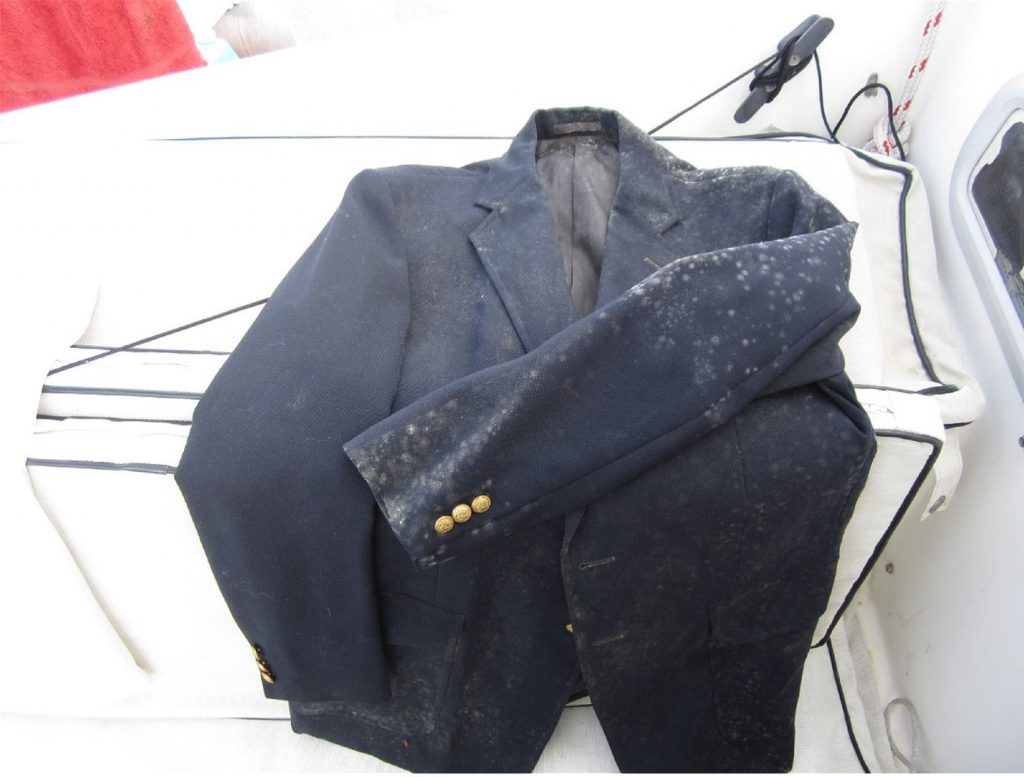
Step-by-Step Guide: How to Get Mold Out of Clothes Safely
This process is designed to neutralize the mold, lift the stain, and eliminate that notorious musty smell. Remember, patience and proper products are key to success when you’re figuring out how to get rid of mold in clothes.
1. The Pre-Soak and Initial Scrub
Before the washing machine, you need to manually address the visible mold and spores.
- Brush Off Dry Mold: If the mold is dry, gently brush off the surface mold outdoors. Be careful not to inhale it.
- The Vinegar Soak: Vinegar is a powerful natural mold killer. For a safe, initial pre-soak, mix one part white vinegar with two parts water in a bucket. Submerge the moldy items completely and let them soak for at least one hour—or even overnight for severe cases. Vinegar is safe for most fabrics and is excellent for getting rid of musty smells in laundry.
- The Baking Soda Paste: For tough, set-in stains or stubborn patches of black mold spots out of fabric, mix baking soda with a little water to form a thick paste. Gently scrub the stain with an old, soft toothbrush before soaking. This helps lift the mildew.
2. The Heavy-Duty Wash Cycle
After pre-treating, it’s time for the washing machine. Crucially, wash moldy clothes separately from all other laundry.
- Temperature is Key: Use the hottest water setting appropriate for the fabric. Heat helps kill any remaining spores.
- Cleaning Agent: Add your regular laundry detergent, plus one of the following powerful mold-fighting boosters:
- Option A (For White/Colorfast Fabrics): Add $1/2$ to 1 cup of chlorine bleach to the wash cycle. Bleach is highly effective at neutralizing mold and getting mold off white clothes, but it can damage colors and fibers. Use with caution.
- Option B (For Colors/Delicate Fabrics): Add $1/2$ cup of Borax or $1$ cup of oxygen bleach (color-safe bleach) along with your detergent. These are milder but still potent mold inhibitors.
- Run Multiple Cycles: If the smell or stain persists, repeat the wash cycle. Never dry an item until you are certain the mold and musty odor are gone.
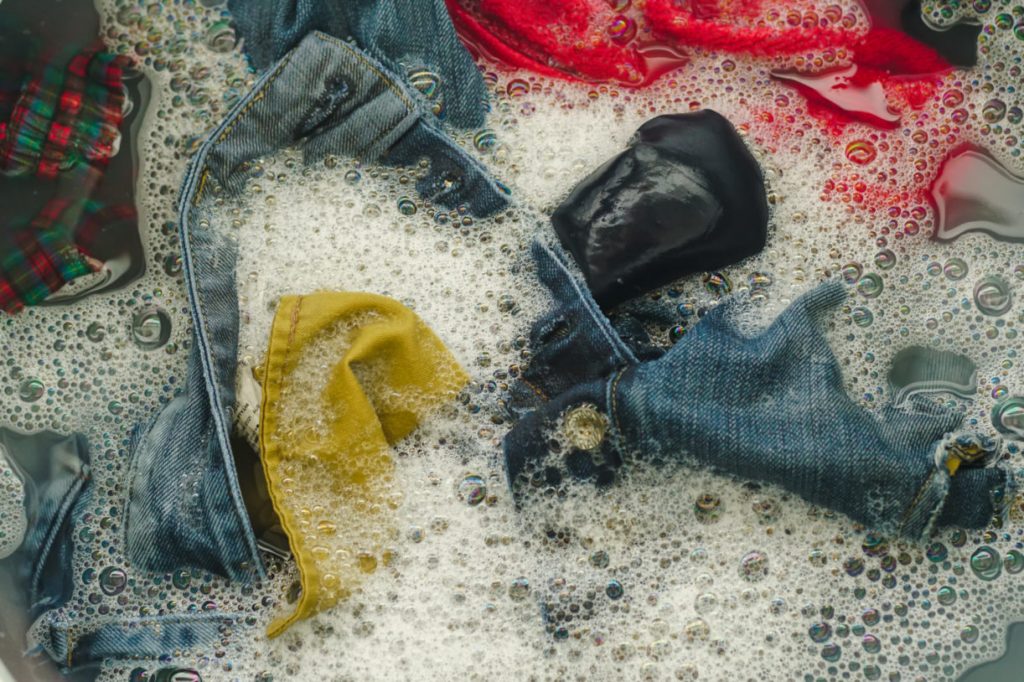
3. Stain Removal for the Stubborn Residue
Sometimes, even after the mold is dead, a faint mildew stain or discoloration remains.
- Lemon Juice and Salt (Natural Bleach): For lingering yellow or light stains, moisten the stain, squeeze lemon juice onto it, sprinkle with salt, and lay the item out in direct sunlight for a few hours. This natural bleaching action can work wonders on things like linen or canvas.
- Dye or Color Test: If a strong cleaning agent has lightened the fabric, you may need to use a fabric dye to restore the color, or accept that the stain removal process was successful but left a slightly faded spot. Saving the structural integrity is often the most important goal when dealing with mold.
4. The Critical Drying Phase
Never, ever put moldy or damp clothes into a dryer. The high, contained heat can actually set the stain and embed any surviving spores deep into the fabric fibers, making removal impossible.
- Air Dry Outdoors: Hang the cleaned clothes outdoors in direct sunlight if possible. The UV rays are a natural disinfectant and help eliminate residual smells and moisture. This is especially effective for large items like jackets, duvets, or a life jacket that is hard to clean inside a machine.
- Indoor Air Drying: If you must dry indoors, use a well-ventilated area with a fan. Ensure the clothes are completely bone-dry before storing them or mixing them with other laundry.
5. Decontaminating the Laundry Room and Storage Area
If you went to all the trouble to figure out how to get mold out of clothes, you need to ensure your laundry machine or storage area isn’t the source of the next infestation.
- Clean the Machine: Run an empty hot water wash cycle with bleach or specialized washing machine cleaner to kill any spores residing inside the drum.
- Inspect and Treat Storage: Clean the drawers, shelves, and cabinets where the moldy items were stored. For instance, how do I get the musty smell out of dresser drawers? Wipe them down with a vinegar/water solution and leave them open to air out completely before putting clothes back in.
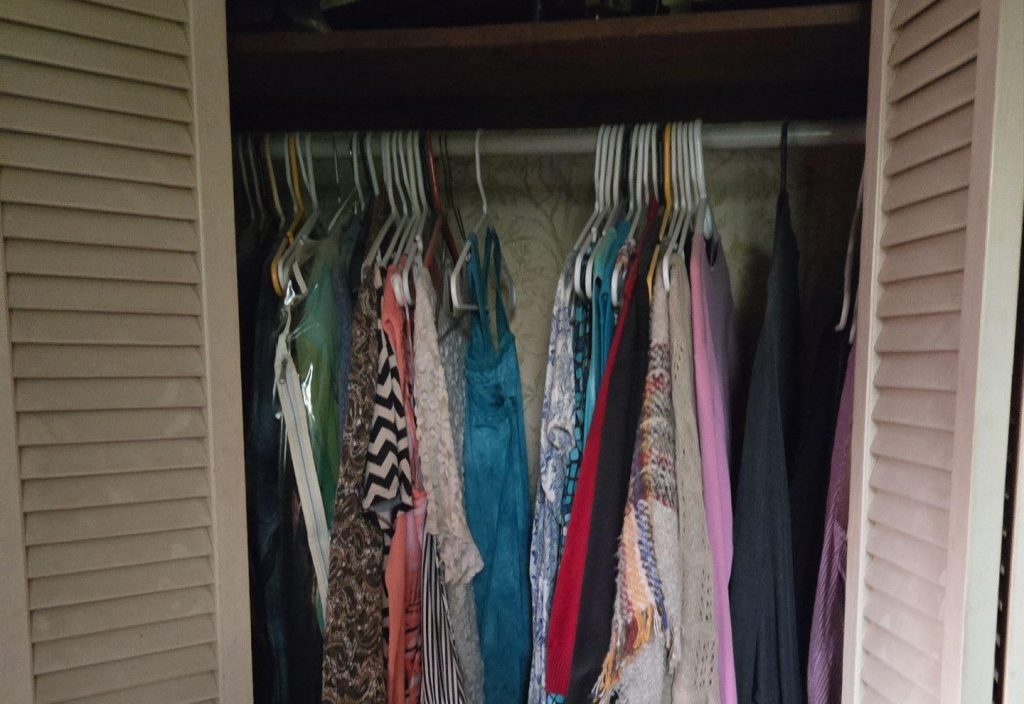
When to Call the Restoration Experts: Warning Signs
While you can manage a few moldy garments, extensive mold on clothes is a clear indicator of a much larger structural moisture issue in your home. Residents in Shackle Island, Millersville, and the wider Nashville area need to be vigilant for these warning signs that indicate you need professional mold remediation services:
A. Widespread Growth on Multiple Items
If mold has spread to a large portion of your closet, or if it is growing rapidly on surfaces like leather or suede jackets, this means the air itself is highly contaminated. The humidity level in your home is too high, and spores are settling everywhere. Attempting to clean these fabrics will likely release a dangerous amount of spores into your living space.
B. Mold on Non-Porous Surfaces
If you see mold growing on walls, baseboards, behind furniture, or in the air conditioning vents, the contamination is structural. This means the moisture source, a leaky pipe, failed water mitigation, or roof leak, is feeding mold within the drywall and insulation. At this point, no amount of home washing will address the core problem.
C. Contamination from Category 3 Water
If your clothes were soaked by Category 3 (Black Water), such as sewage backup, contaminated river water, or flood water that has been stagnant for a long time, the items are considered biohazards. Do not attempt to clean these yourself. They must either be professionally decontaminated by a certified team like Puroclean of Hendersonville or safely discarded. Your health is not worth the risk of saving a sweater.
D. Musty Odor Persistence
If you successfully clean the clothes, but the musty smell returns quickly, it means the spores are still rampant in the environment (closet, drawer, room). This is a strong sign that you need a professional inspection to find the source of the excess humidity or hidden moisture. Call Puroclean of Hendersonville

Local Authority: Why Puroclean of Hendersonville is Your Best Choice for Mold Removal
We are more than just a company that helps you figure out how to get black mold stains out of fabric; we are certified specialists in diagnosing and permanently removing the moisture source that causes mold. For residents in Cottontown, Goodlettsville, Graball, and all of Middle Tennessee, we offer comprehensive mold remediation.
The Professional Difference:
- Containment and Air Scrubbing: We set up professional containment barriers and use HEPA-filtered air scrubbers to trap and remove airborne mold spores, preventing contamination from spreading while we work.
- Moisture Mapping and Source Identification: We don’t just treat the mold you can see. We use non-invasive technology (thermal cameras and moisture meters) to find the hidden leaks and saturated materials behind walls, which is the root cause of the mold problem.
- Structural Remediation: We safely remove and dispose of non-salvageable materials (like moldy drywall or insulation), treat the exposed structure with powerful anti-microbial agents, and ensure the area is dried to pre-loss condition standards.
Our goal is not just to get rid of mould on clothes but to ensure the structure of your home is safe, dry, and clean for the long term.
Frequently Asked Questions (FAQs) for Nashville-Area Homeowners
Q1: Is the “musty smell” actually mold or just mildew?
A: The musty smell is the smell of microbial volatile organic compounds (MVOCs) released by mold and mildew as they grow. Mildew is a type of mold that usually grows flat on surfaces like shower curtains and can be easier to remove. The smell is a definitive sign of fungal growth and should be taken seriously. If you are struggling with how to get rid of the musty smell in laundry after multiple washes, the source is likely in your home.
Q2: Will putting my clothes in the freezer kill the mold?
A: No. Freezing will halt the mold’s growth temporarily, but it will not kill the spores or remove the stain. As soon as the item thaws out and is exposed to warmth and humidity, the mold will reactivate and start growing again. Freezing is not an effective method for permanent mold removal.
Q3: How do you get mold off of fabric if it’s leather or suede?
A: Leather and suede require specialized, professional cleaning, as water and harsh chemicals (like bleach or vinegar) can severely damage and dry out the material. For small, localized mold on leather, a very light wipe with a cloth dampened with denatured alcohol might work, but it should be conditioned immediately afterward. For important or valuable items, call a professional leather cleaner or a mold remediation company like us.
Q4: How quickly does mold grow on clothes after water damage?
A: If clothing gets wet after a flood or leak, and the ambient temperature is warm (as it often is in Tennessee), mold spores can begin to germinate and appear within 24 to 48 hours. This is why immediate action, washing, and proper drying are so crucial when trying to figure out how to get mold stains out of fabric.
Q5: Will running my dehumidifier help prevent mold on my clothes?
A: Absolutely. Running a dehumidifier, especially in damp areas like basements or laundry rooms, is excellent for preventing mold growth on textiles. Keeping the humidity level in your home below 50% dramatically reduces the moisture necessary for mold spores to grow on clothes, furniture, and structural materials.
Final Call: Don’t Let Mold Ruin Your Home. Call (615) 348-7200
Tackling a few moldy garments is achievable, but please know the limitations of DIY cleaning. If your battle with how to get mold out of clothes is an ongoing struggle, it is a sign of a larger, hidden moisture problem that is threatening the structure and air quality of your home.
We are your local, certified experts in mold removal in Hendersonville, dedicated to restoring your property and your peace of mind. We have the advanced tools and expertise to find and fix the underlying issue, ensuring you and your family breathe easy.
If the mold is widespread, recurring, or related to major water damage, skip the laundry room and call the professionals first.
Call Puroclean of Hendersonville Today for a Professional Mold Inspection and Remediation.
Your Trusted Local Experts in Water and Mold Damage Restoration.


